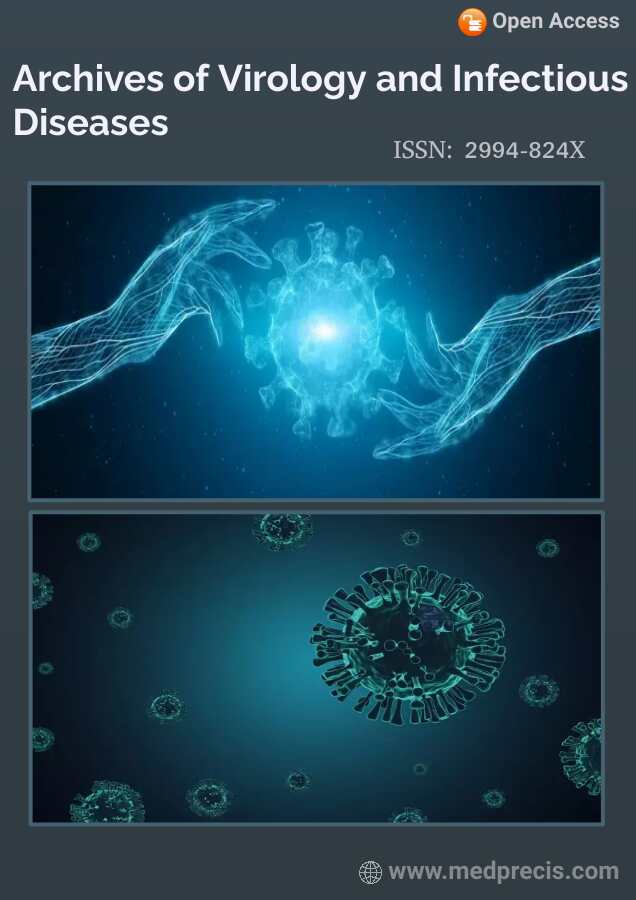A Mini Review on Autoimmune Mechanisms of Psoriasis and Role of Pathogenic
Mital Patel*
Department of Pathology, Yale School of Medicine, New Haven, Connecticut, USA
Correspondence to: Mital Patel, Department of Pathology, Yale School of Medicine, New Haven, Connecticut, USA. E-mail: mital_patel@hotmail.com
Received: April 19, 2023; Accepted: May 05, 2023; Published: May 14, 2023
Citation: Patel M. A Mini Review on Autoimmune Mechanisms of Psoriasis and Role of Pathogenic. Arch Virol Infect Dis. 2023;1(1):34-35.
Copyright: © 2023 Park L. This is an open-access article distributed under the terms of the Creative Commons Attribution License, which permits unrestricted use, distribution, and reproduction in any medium, provided the original author and source are credited.
MINI REVIEW
Meningiomas arise from meninx of the brain and may be developed in numerous elements of the brain as well as os base and infrequently within the cavity system [1]. They show a rising incidence with age. Most of the cases with monogenic disorder sort two, develop meningiomas [2]. monogenic disorder sort two factor mutations are often seen in regarding sixty p.c of the cases with stray meningiomas [3], therefore monogenic disorder sort two-point mutation, is that the commonest factor alteration in meningiomas [4]. monogenic disorder sort two neoplasm suppressor gene’s location is on the arm of the 22q body [5].
Immunoreactivity reduction or absence of merlin because the monogenic disorder sort two factor product, may additionally be seen in meningiomas [6]. 4.1B/DAL-1 macromolecule is additionally detected to be concerned within the pathologic process of meningiomas [7]. In regarding seventy to eighty p.c of meningiomas, 4.1B/DAL-1 loss of expression is often seen [8]. In regarding seventy p.c of meningiomas, loss of state that involves the four.1B/DAL-1 region on 18p body, has been detected [9]. Monogenic disorder sort two and four.1B/DAL-1 genes inactivity, are often occurred in dysplasia, atypical and benign meningiomas. within the additional malignancy forms, another factor alteration is detected that square measure connected to tumors progression. factor alterations in CDKN2A, P14ARF, CDKN2B genes on 9p and cistron losses on body arms 17q, 10q, 1p, 14q and 9p square measure associated with this class. Having data regarding the genetic science of meningiomas, is of importance to grasp their pathologic process and conjointly to seek out new treatment choices for such tumors.
REFERENCES
1. Perry A (2006) Meningiomas. In: McLendon RE, Rosenblum MK, Bigner DD (Eds.), Russel and Rubinstein’s Pathology of Tumors of the Nervous System, (7th edn), London, Hodder Arnold, pp. 427-474.
2. Wiemels J, Wrensch M, Claus EBJ (2010) Epidemiology and etiology of meningioma. Neurooncol 99(3): 307-314.
3. Perry A, Scheithauer BW, Stafford SL, Lohse CM, Wollan PC, et al. (1999) “Malignancy” in meningiomas: a clinicopathologic study of 116 patients, with grading implications. Cancer 85(9): 2046-2056.
4. Tirakotai W, Mennel HD, Celik I, Hellwig D, Bertalanffy H, et al. (2006) Secretory meningioma: immunohistochemical findings and evaluation of mast cell infiltration. Neurosurg Rev 29(1): 41-48.
5. Zorludemir S, Scheithauer BW, Hirose T, Van Houten C, Miller G, et al. (1995) Clear cell meningioma. A clinicopathologic study of a potentially aggressive variant of meningioma. Am J Surg Pathol 19(5): 493-505.
6. Perry A, Gutmann DH, Reifenberger G (2004) Molecular pathogenesis of meningiomas. J Neurooncol 70(2): 183-202.
7. Nakasu S, Fukami T, Jito J, Matsuda M (2005) Microscopic anatomy of the brain-meningioma interface. Brain Tumor Pathol 22(2): 53-57.
8. Barresi V, Caffo M, Branca G, Caltabiano R, Tuccari G (2012) Meningeal tumors histologically mimicking meningioma. Pathol Res Pract 208(10): 567-577.
9. Perry A, Chicoine MR, Filiput E, Miller JP, Cross DT (2001) Clinicopathologic assessment and grading of embolized meningiomas: a correlative study of 64 patients. Cancer 92(3): 701-711.


